
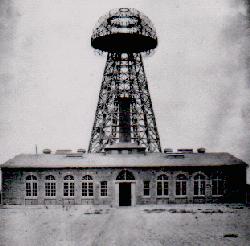
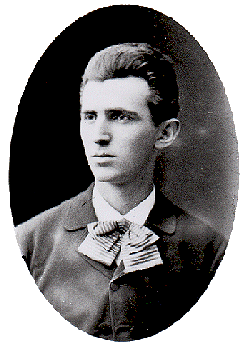
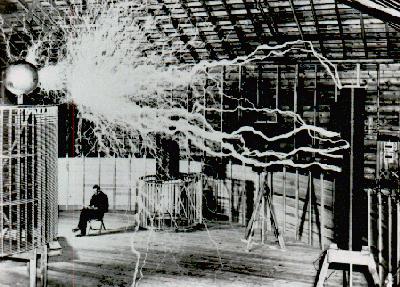
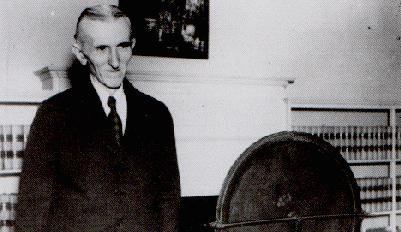
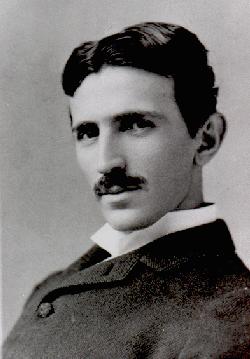
|
THE FAIRY TALE OF ELECTRICITY
by
Nikola Tesla
Whoever wishes to get a true appreciation of the greatness of our age
should study the history of electrical development. There he will find a
story more wonderful then any tale from Arabian Nights.
It begins long before the Christian era when Thales, Theophrastus and Pliny
tell of the magic properties of electron - the precious substance we call
amber - that came from the pure tears of the Hellades, sisters of Phaeton, the
unfortunate youth who attempted to run the blazing chariot of Phoebus and
nearly burned up the earth. It was but natural for the vivid imagination of
the Greeks to ascribe the mysterious manifestations to a hyperphysical
cause, to endow the amber withlife and with a soul. Whethe this was actual
belief or merely poetic interpretation is still a question. Even at this
very day many of the most enlightened people think that the pearl is alive,
that it grows more lustrous and beautiful in the warm contact of the human
body. So too, it is the apinion of men of science that a crysal is a living
being and this view is being extended to embrace the entire physical
universe since Prof. Jagadis Chunder Bose has demonstrated, in a series of
remarkable experiments, that inanimate matter responds to the stimuli in
exactly the sam manner as plant fiber and animal tissue.
The superstitious belief of the ancients, if it existed at all, can
therefore not be taken as a reliable proof of their ignorance, but just how
much they knew about electricity can only be conjectured. Acurious fact is
that the ray or torpedo fish, was used by them in electro-therapy. Some
old coins show twin stars, or sparks, such as might be produced by a
galvanic battery. The records, though scanty, are of a nature to fill us with
conviction that a few initiated, at least, had a deeper knowledge of amber -
phenomena. To mention one, Moses was udnoubtedly a practical and skillful
electrician far in advance of his time. The Bible describes precisely and
minutely arrangements constituting a machine in which electricity was
generated by friction of air against silk curtains and stored in a box
constructed like a condenser. It is veryplausible to assume that the sons of
Aaron were killed by a high tension discharge and that the vestal fires
of the Romans were electrical. The belt drive must have been known to
engineers of that epoch and it is difficult to see how the abundant evolution
of static electricity could have escaped their notice. Under favorable
their notice. Under favorable atmospheric conditions a belt producing many
striking actions. I have lighted incandescent lamps, operated motors and
performed numerous other equally interesting experiments with electricity
drawn from belts and stored in tin cans.
That many facts in regard to the subtle force were known to the
philosophers of old can be safely concluded, the wonder is, why two thousand
years elapsed before Gilbert in 1600 published his famous work, the first
scientific treatise on electricity and magnetism. To an extent this long
period of unproductiveness can by explained. Learning was the privilege of
a few and all information was jealously guarded. Communication was
difficult and slow and a mutual understanding between widely separated
investigators hard to reach. Then again, men of those times had no thought of
the practical, they lived and fought for abstract principles, creeds,
traditions and ideals. Humanity did not change much in Gilbert's time but
his clear teachings had a telling effect on the minds of the learned.
Friction machines were produced in rapid succession and experiments and
observations multiplied. Gradually fear and superstition gave way to
scientific in-sight and in 1745 the world was thrilled with the news
that Kleist and Leyden had succeeded in imprisoning the uncanny agent in
a phial from which it esca-ped with an angry snap and destructive force.
This was the birth of the condenser, perhaps the most marvelous electrical
device ever invented.
Two tremendous leaps were made in the succeeding forty years. One was when
Franklin demonstrated the identity between the gentle soul of amber and the
awe-inspiring belt of Jupiter; the other when Galvany and Volta brought
out the contact and chemical battery, from which the magic fluid could be
drawn in unlimited quantities. The succeeding forty years bore still greater
fruit. Oersted made a significant advance in deflecting a magnetic needle by
an electric current, Arago produced the electro-magnet, Seebeck the
thermo-pile and in 1831, as the crowning achievement of all, Faraday
announced that he had obtained electricity from a magnet, thus discovering
the principle of that wonderful engine - the dynamo, and inaugurating a new
era both in scientific research and practical application. From that time on
inventions of inestimable value have followed one another at a bewildering
rate. The telegraph, telephone, phonograph and incandescant lamp, the
induction motor, oscillatory transformer, Roentgen ray, Radium, wireless
and numerous other revolutionary advances have been made and all
conditions of existence eighty-four years which have since elapsed, the
subtle agents dwelling in the living amber and loadstone have been
transformed into cyclopean forces turning the wheels of human progress with
ever increasing speed. This, in brief, is the fairy tale of electricity from
Thales to the present day. The impassible has happened, the wildest dreams
have been surpassed and the astounded world is asking: What is coming next?
"The world, I think, will wait a long time for Nikola Tesla's equal
in achievement and imagination."
E.H. Armstrong
|







